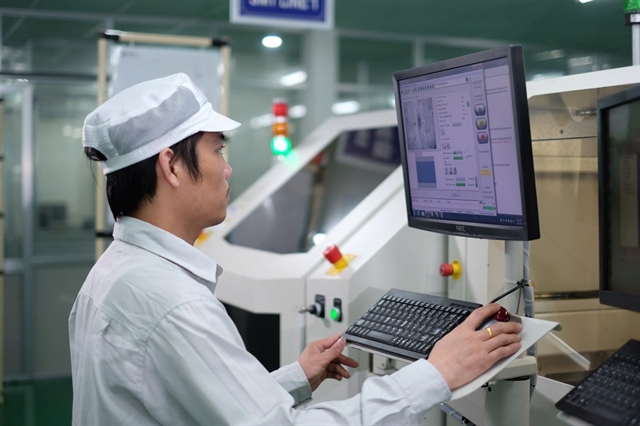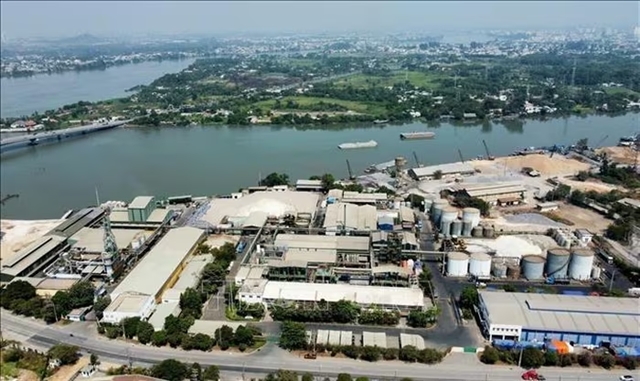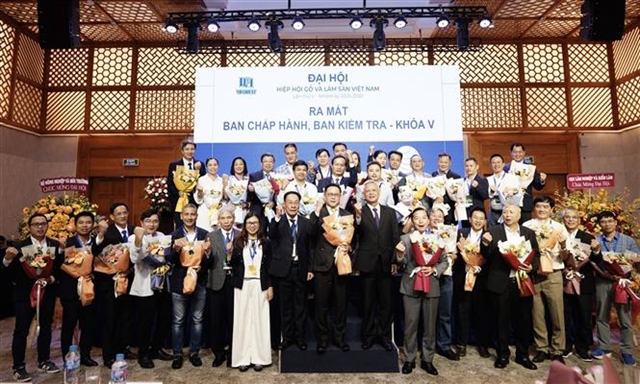 Politics & Law
Politics & Law

 |
| Rạng Đông Light Source & Vaccum Flask JSC has been investing in science and technology to optimise its production chains. VNA/VNS Photo Xuân Cường |
The STID model — or the Science, Technology, Innovation, Digital transformation model — has been viewed as the traditional pathway for scientific and technological development.
Taking this approach, the process begins with scientific research, followed by technological advancement, leading to innovation, and ultimately driving digital transformation. This strategy is seen as crucial not only for advancing domestic science and technology, but also for helping Việt Nam keep pace with global trends.
However, in a recent article, Minister of Science and Technology Nguyễn Mạnh Hùng proposed a new, reversed approach: Digital transformation - Innovation - Technology - Science.
Digital transformation
According to Hùng, digital transformation is now at the core of this “reverse thinking”. No longer merely a concept or trend, it has become an indispensable element in all areas of modern life. The rapid rise of digital platforms, cloud computing, the Internet of Things (IoT), and AI is creating a dynamic and diverse technological environment.
These platforms not only foster creativity but also enable the realisation of innovative ideas. As digital technologies become more accessible, businesses and organisations are better equipped to apply them across fields such as healthcare, education, agriculture, and manufacturing. The digital environment also enhances connectivity and collaboration, paving the way for breakthroughs in innovation.
As innovative ideas take shape and mature, demand grows for advanced technologies to put these ideas into practice.
Technologies such as AI, big data, IoT, and blockchain are increasingly vital to this process. They not only enable the creation of new products and services but also improve workflows, boost productivity, and offer novel solutions to social challenges.
Organisations and businesses now require technology not just to optimise existing processes but also to support new initiatives. This makes innovation a key driver of technological development and a foundation for a smarter, more efficient society.
 |
| Minister of Science and Technology Nguyễn Mạnh Hùng. VNA/VNS Photo |
Technology drives demand for R&D
Once new technologies are adopted and innovative ideas realised, they generate further demand for scientific research. Technological development and scientific research are closely intertwined, with advanced technologies posing new challenges that require rigorous scientific inquiry.
In fields such as physics, chemistry, engineering, and medicine, progress is often accompanied by complex problems that science must address. Practical needs arising from new technologies drive scientific exploration aimed at refining, optimising, and improving efficiency.
As new technologies are applied across industries, emerging challenges create new research questions. This generates a continuous feedback loop in which each technological leap prompts further scientific discovery.
Unlike the traditional model, the "reverse model" begins with real-world needs and proceeds toward scientific inquiry. Starting from practical challenges, the process flows through digital transformation and innovation, creating demand for new technologies, which in turn drives scientific research.
The article emphasises that this approach not only highlights the interconnectedness of each element in the development chain but also promotes flexibility and creativity in applying technology to real-life situations. By grounding development in practical needs rather than abstract theory, science and technology can become more responsive and effective.
With a long-term strategic vision, this reverse model addresses real-world problems while cultivating an environment conducive to innovation, science, and technology. The STID framework is thus expected to become a driving force behind Việt Nam’s efforts to build a modern, intelligent, and sustainable digital society.
Hùng said that science, technology, innovation, and digital transformation must ultimately serve the goal of enhancing national competitiveness, supporting socioeconomic development, ensuring national security, and improving the quality of life.
Three breakthrough policy groups
In his article, the minister outlined three key policy groups designed to accelerate this transformation.
First, digital transformation policies focus primarily on administrative reforms – shifting operations to digital platforms and restructuring organisations through technology, especially AI. These changes rely more on leadership and regulatory decisions than technological barriers, allowing for swift implementation.
Second, innovation policies aim to stimulate technological innovation in enterprises, particularly through preferential loans and tax incentives to boost labour productivity. Start-ups and new business models are supported through venture capital and regulatory sandboxes.
Third, sci-tech policies concentrate on upgrading infrastructure, modernising research labs, and maintaining long-term support for basic research at universities – where most research staff and PhD students are based. Technological development is prioritised in research institutes and businesses, with tax incentives designed to encourage enterprises to contribute 60–80 per cent of national R&D spending.
Currently, Việt Nam’s sci-tech efforts are directed at strategic technologies that underpin high-value, breakthrough industries. These technologies are considered essential for positioning the country at the forefront of global scientific and technological progress.
Minister Hùng also stressed the importance of aligning basic research with the development of nationally strategic technologies and products. VNS




